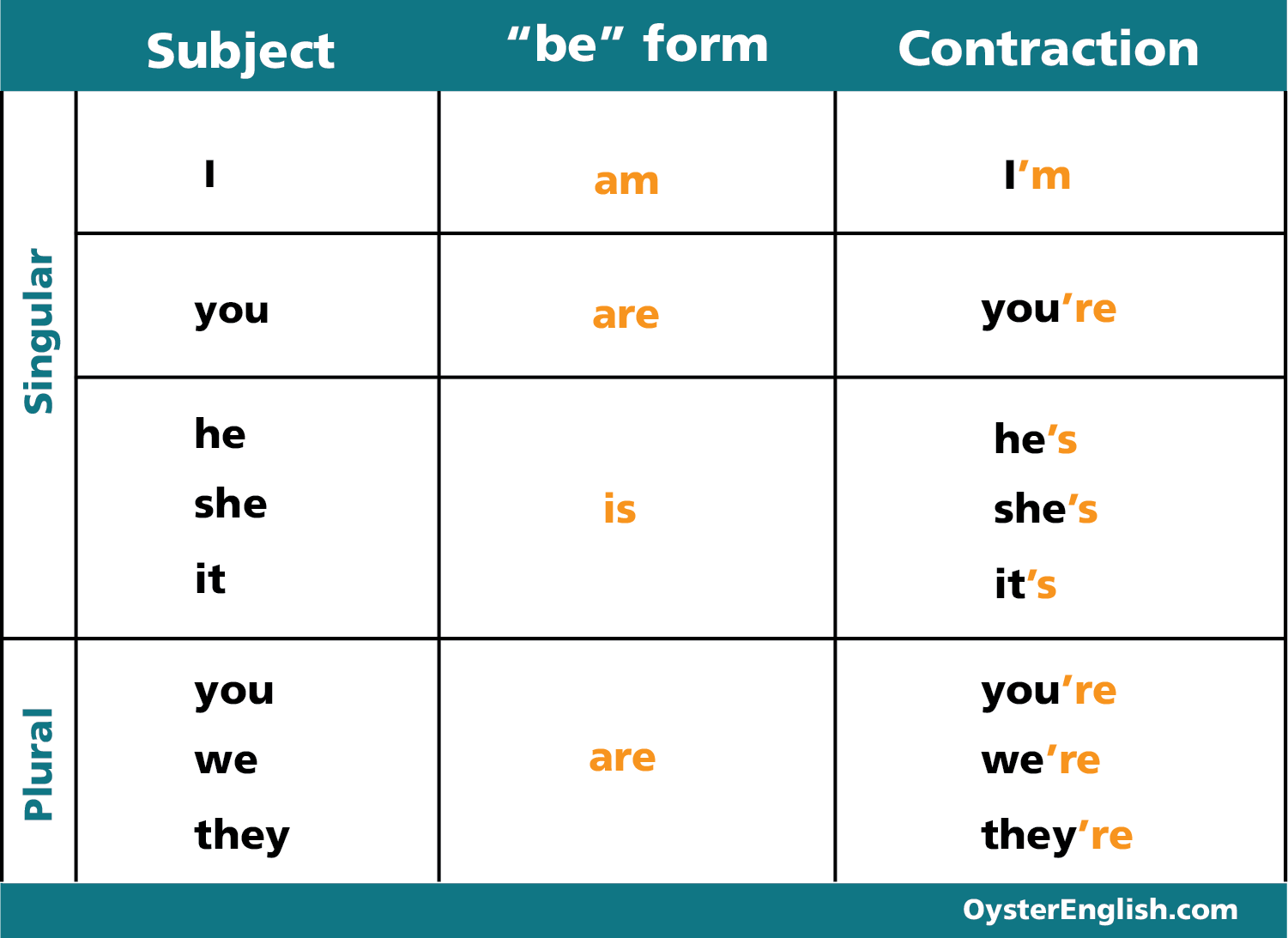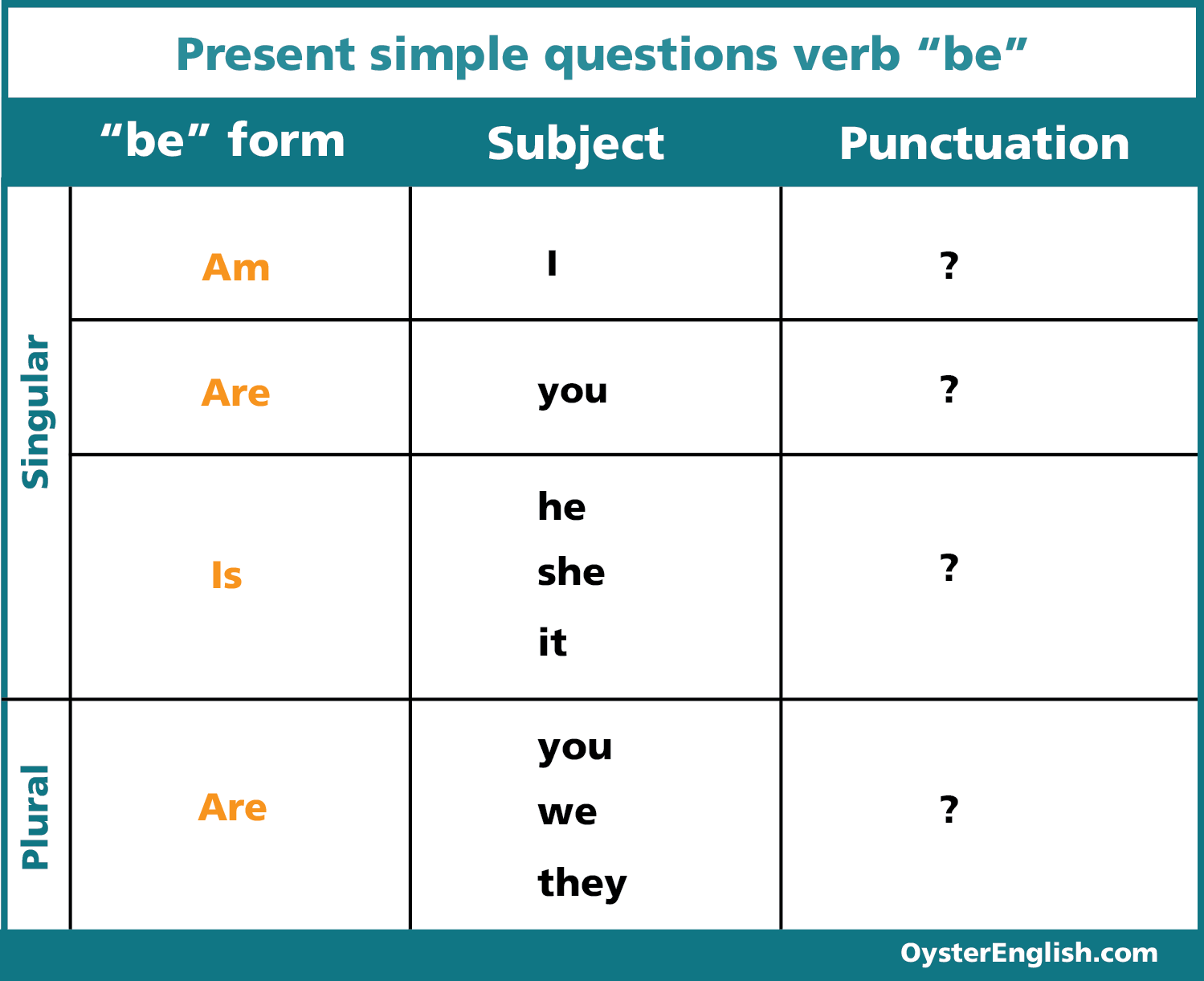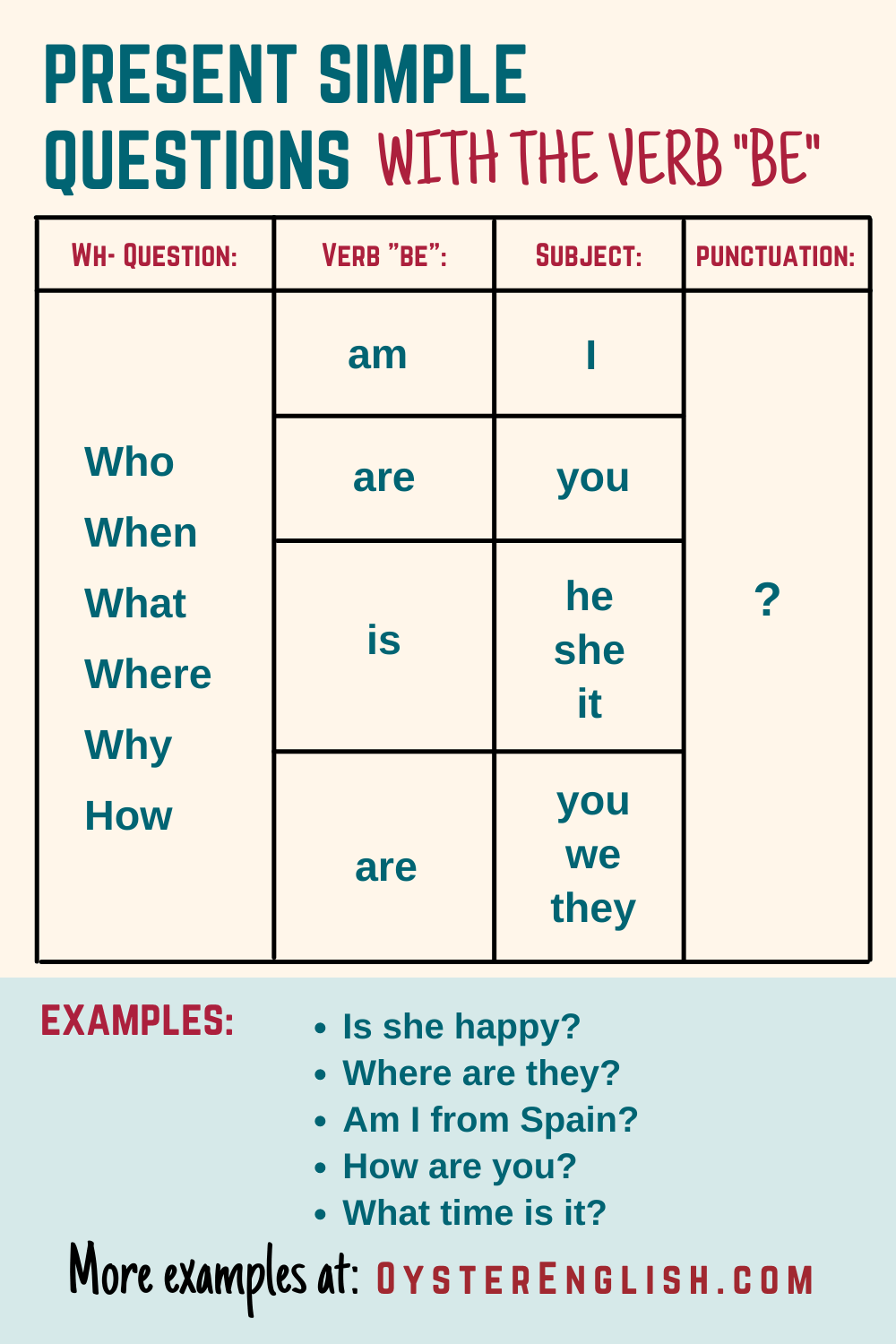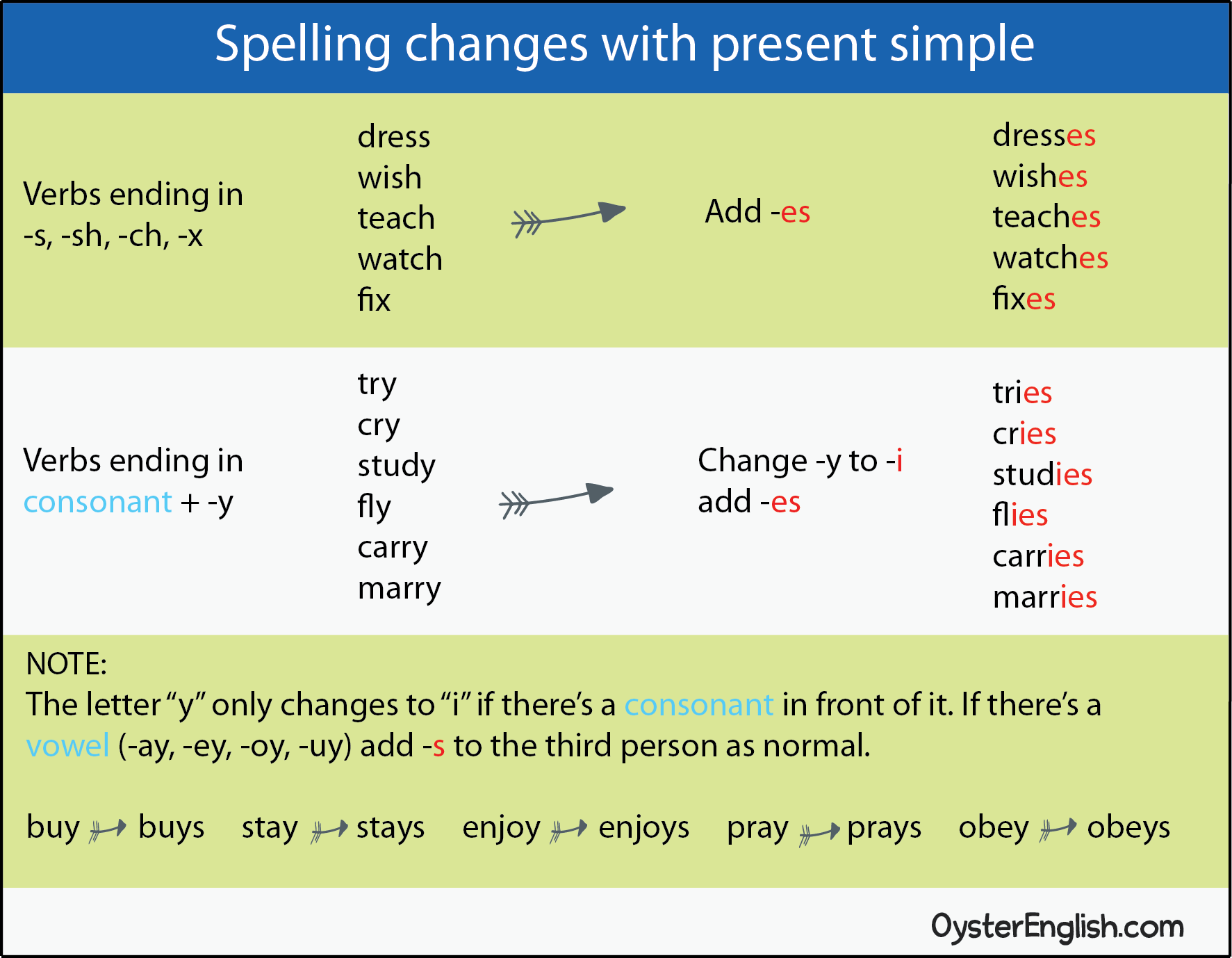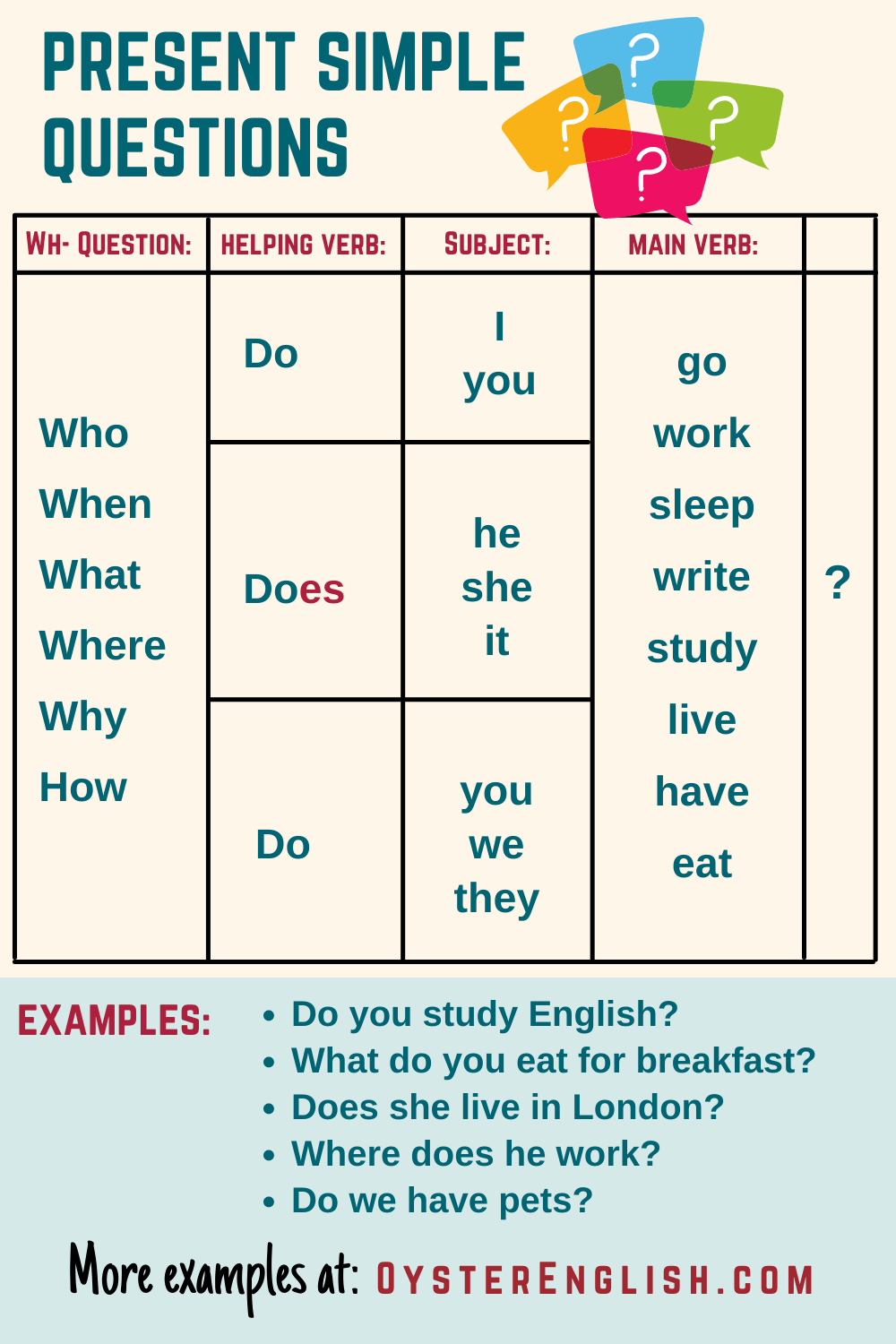How to form the present simple tense
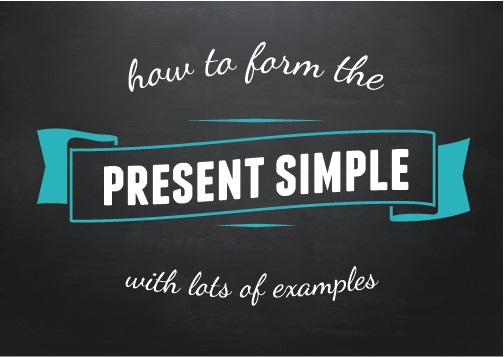
Let's learn how to form the present simple tense (also called the simple present tense).
This is a long section so you can click on the links below to go to each main section:
We'll learn how to make positive and negative forms, short forms (contractions) and questions.
[Note: Click here to learn how to use the present simple.]
Are you ready? Let's get started!
Present simple with the verb "be"
We use the verb "to be" in the simple present with either a noun, adjective or prepositional phrase:
- I am a teacher. (with a noun)
- You are smart. (with an adjective)
- He is from the United States (with a prepositional phrase)
We can also use a short form (a contraction) with the simple present:
- I'm tired. (I'm = I am).
- They're from Argentina. (they're = they are)
This chart shows the form of the verb "to be" in the positive (affirmative) form:
Examples:
- I am Nicole. I'm American.
- He is a doctor. He's very intelligent.
- She is sick today. She's unhappy.
- It is a luxury car. It's bright red.
- We are friends. We're also classmates.
- You are late for dinner. You're hungry.
- They are delicious cookies. They're sugary too.
Questions (positive) with verb "be"
Questions with the verb "be" are formed by inverting the subject and correct form of the verb "be."
Inverting simply means we change the order of the subject and verb form:
Affirmative statement: I am late. (the subject "I" is first, followed by the verb form "am")
Affirmative question: Am I late? (to make a question, the verb form "am" comes first followed by the subject "I").
Examples:
- Am I late for the movie?
- Is he French or Swiss?
- Is she young or old?
- Is it time for dinner?
- Are we interested in sports?
- Are you teachers?
- Are they comfortable?
Affirmative (positive) answers with verb "be"
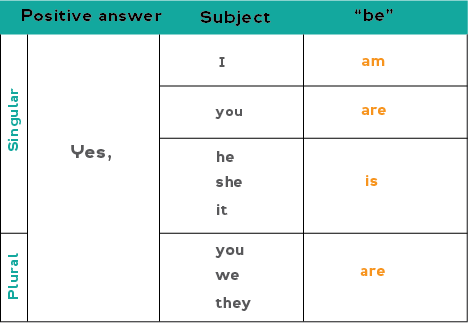
We can answer yes / no questions with the verb "be" using a full answer or a shorter answer:
Examples
Are you Nicole?
- Yes, I am Nicole.
- Yes, I am. (short answer)*
Are they hungry?
- Yes, they are hungry.
- Yes, they are. (short answer)*
* Note: You cannot use a contraction with the short answer:
- Yes, I am. NOT:
Yes, I'm. - Yes, they are. NOT:
Yes, they're.
Negative answers with verb "be"
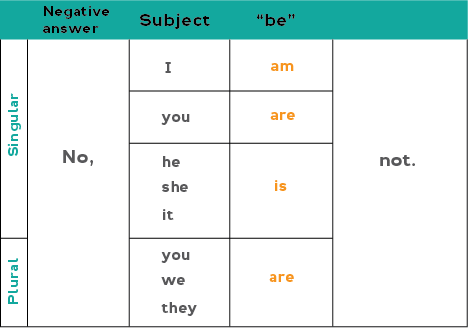
To form negative answers with the verb "be" we use the form above adding "no" and "not."
- No, I am not angry.
- No, he is not from London.
- No, we are not students.
We can also use contractions (add an apostrophe ' ) to show a letter is missing. Why do we use contractions? This enables us to speak more quickly in English.
The charts below show there are two ways to do this:
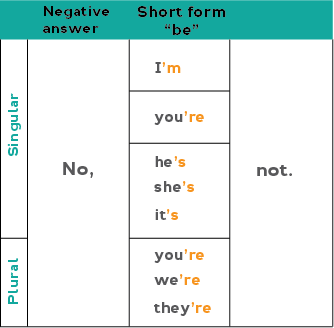
Examples:
- Are you from China? No, I'm not.
- Is it Saturday? No, it's not.
- Are we late for the bus? No, we're not.
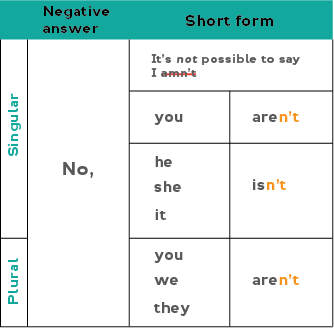
Examples:
- Are you from China? No, I'm not. (WRONG: No, I amn't)
- Is it Saturday? No, it isn't. / No, it isn't Saturday.
- Are we late for the bus? No, we aren't / No, we aren't late.
Wh- questions with "be"
We can also use contractions for the following wh- questions:
who is = who's what is = what's where is = where's when is = when's
why is = why's how is = how's
Examples:
- Where is she from?
- Where's she from?
- How are they?
- Why are they so happy?
- What is your name?
- What's your first name?
- What are their nationalities?
- Where are they?
- How's the weather?
Present simple with other verbs
Forming the simple present tense with other verbs is.... rather simple. Yay!
- Add the letter "s" to the third person singular: he / she / it
- Use the base form of the verb for all the other subject forms: I / you / we / you / they
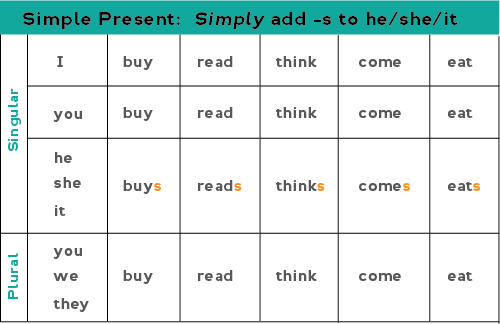
Examples:
- I like apples. My boyfriend likes oranges.
- The bus comes in 15 minutes. The trains come every hour.
- We read the newspaper every day. The old man only reads the comics.
- I always eat rice for dinner. The baby eats mashed carrots.
- I think it's five o'clock. My sister thinks it's six o'clock.
- They buy groceries on Sundays. He buys groceries on Saturdays.
Exceptions present simple
The verbs have, go and do are irregular in the present simple:
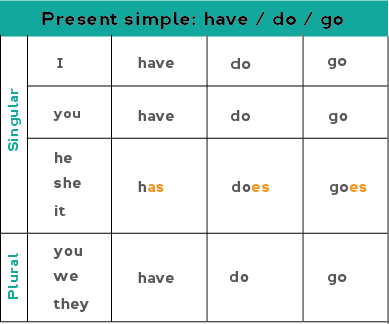
Examples:
- We go to the store. He goes to the bank.
- I do my housework. My son does his homework.
- I have two sisters. My mother has two brothers.
Spelling changes with the present simple
There are also some spelling changes in the third person:
- If the verb ends in a -y, we change it to -i and add -es if there's a consonant before the -y.
- We add -es after verbs that end with these letters: -s, -sh, -ch and -x
Examples:
- I study English on Mondays. My brother studies Spanish on Thursdays.
- My baby cries every night. Sometimes I cry too.
- The priest blesses the baby.
- The man presses his shirt with an iron.
- The mother kisses her children goodbye. Her children kiss her too.
- I brush my hair. My husband brushes his teeth.
- I wash the dishes while the dog finishes his dinner.
- The teacher teaches chemistry.
- My friends and I watch television.
- The athletes stretch after running.
- The weightlifter flexes his muscles.
- The cook mixes the cookie dough.
- The plumber fixes the sink.
Negative form of the present simple
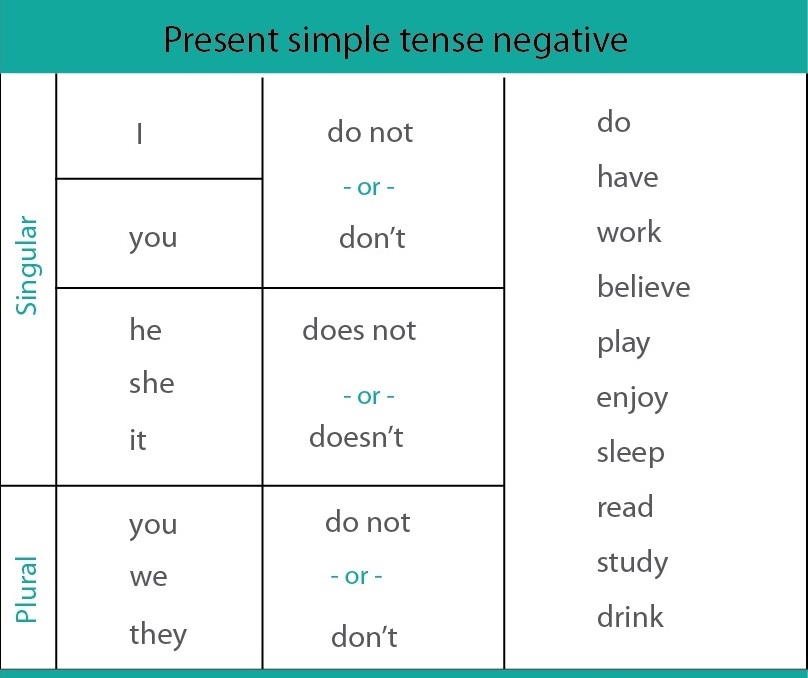
For the negative, we add do not (or don't) for all subject forms except the third person, which adds the -s to "do" -- Please carefully note the "s" is added to does not/ doesn't NOT the base form.
Correct: He doesn't work today.
NOT correct: He doesn't works today. (do not add an 's to "work")
Examples:
- I don't play tennis often. / I do not play tennis often.
- My mother doesn't enjoy rap music. / My mother does not enjoy rap music.
- We don't sleep late on weekdays. / We do not sleep late on weekdays.
- The teacher doesn't read comic books. / The teacher does not read comic books.
- My professor doesn't believe my excuse. / My professor does not believe my excuse.
Yes / No questions with the present simple
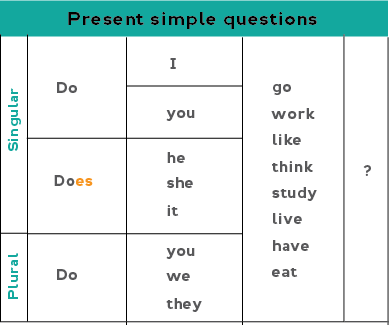
Examples:
- Do you work at the library?
- Does she think it's good?
- Does he live in China?
- Do you eat meat?
- Do they have children?
Wh- questions with the present simple
Examples:
- When do you study English?
- How often does he eat pizza?
- Where does your mother live?
- Why do you think that?
- Who do they like?
- What does the girl have in her bag?
- How much does your dog eat?
Whew! We covered a lot of information on this page. Check back for exercises that will help you practice the simple present tense in its different forms.
[Note: Click here to learn how to use the present simple.]
- Home Page ›
- Main Grammar Page ›
- Using "Present Simple"
